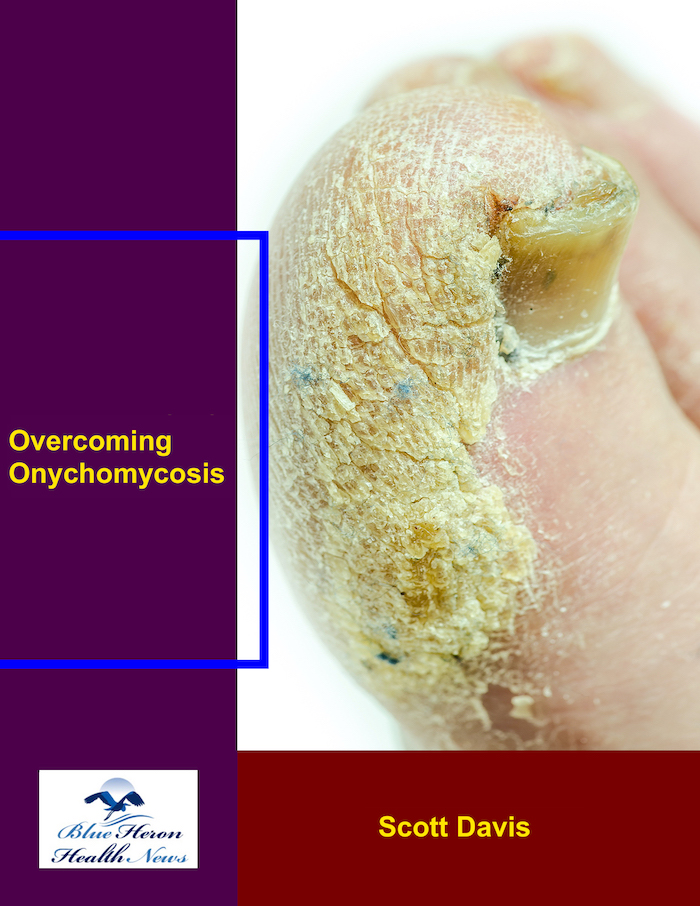
Overcoming Onychomycosis™ By Scott Davis If you want a natural and proven solution for onychomycosis, you should not look beyond Overcoming Onychomycosis. It is easy to follow and safe as well. You will not have to take drugs and chemicals. Yes, you will have to choose healthy foods to treat your nail fungus. You can notice the difference within a few days. Gradually, your nails will look and feel different. Also, you will not experience the same condition again!
How does onychomycosis affect the nails?
Onychomycosis, a fungal infection of the nails, affects the nails in various ways depending on the type and severity of the infection. The primary impact is due to the growth of fungi (dermatophytes, yeasts, or non-dermatophyte molds) within the nail structure, leading to changes in appearance, texture, and function.
Key Effects of Onychomycosis on the Nails:
- Discoloration
- Yellow, White, Brown, or Black: The most noticeable change is the discoloration of the nails. The nails may turn yellow, white, brown, or black, depending on the type of fungus and the extent of the infection.
- Chalky White Spots: In white superficial onychomycosis, chalky white spots or patches appear on the nail surface.
- Thickening of the Nails
- Hyperkeratosis: The nails often become abnormally thick due to the accumulation of keratin and fungal material. This thickening makes the nails difficult to trim and may cause discomfort when wearing shoes or walking.
- Distortion of Shape: Thickened nails can become distorted or misshapen, losing their natural smooth curve and structure.
- Brittle and Fragile Nails
- Crumbly Texture: Infected nails may become brittle and crumbly, breaking easily with minimal pressure. The nails may flake or split.
- Loss of Structural Integrity: As the infection progresses, the nail may lose its structural integrity and begin to break apart or peel.
- Nail Separation (Onycholysis)
- Separation from Nail Bed: Onycholysis, the separation of the nail from the nail bed, can occur as the infection progresses. This lifting often starts at the edges (distal or lateral) and gradually moves towards the base of the nail.
- Pain and Sensitivity: The exposed nail bed can become sensitive to pressure, touch, or temperature changes, leading to pain or discomfort.
- Deformity
- Abnormal Shape and Contour: The nail may become deformed, with irregular ridges, pits, or an uneven surface. The deformity can make the nail look unsightly and further compromise its function.
- Curvature Changes: The nails may curl or thicken in unusual ways, causing discomfort or difficulty with normal activities.
- Nail Loss
- Complete Detachment: In advanced cases, the nail may completely detach from the nail bed due to severe fungal invasion. This is most common in total dystrophic onychomycosis, where the nail is severely damaged.
- Permanent Loss of Nail Growth: In extreme cases, particularly if the infection has caused significant damage to the nail matrix (the area responsible for nail growth), the nail may not grow back, or the new nail may be permanently deformed.
- Pain and Discomfort
- Pressure and Inflammation: Thickened, distorted nails can press against surrounding skin, especially when wearing tight shoes, causing pain. Inflammation of the surrounding skin (paronychia) may also occur, especially if the infection spreads.
- Difficulty with Mobility and Daily Activities: Infections of the toenails, in particular, can lead to discomfort while walking or standing for long periods, as the thickened nails rub against shoes.
Secondary Effects:
- Infection Spread: If left untreated, onychomycosis can spread to other nails, surrounding skin, or even to other parts of the body.
- Cosmetic Concerns: The appearance of the nails can become a significant cosmetic concern, leading to embarrassment or self-consciousness.
Summary:
Onychomycosis affects the nails by causing discoloration, thickening, brittleness, deformation, and potential nail loss. The severity of the effects depends on the type and duration of the infection. In advanced stages, the infection can lead to pain, nail separation, and complications with mobility or manual dexterity.
Overcoming Onychomycosis™ By Scott Davis If you want a natural and proven solution for onychomycosis, you should not look beyond Overcoming Onychomycosis. It is easy to follow and safe as well. You will not have to take drugs and chemicals. Yes, you will have to choose healthy foods to treat your nail fungus. You can notice the difference within a few days. Gradually, your nails will look and feel different. Also, you will not experience the same condition again!